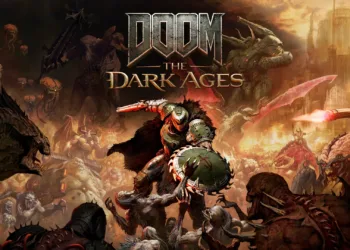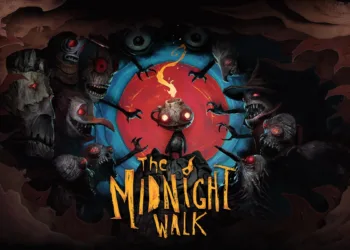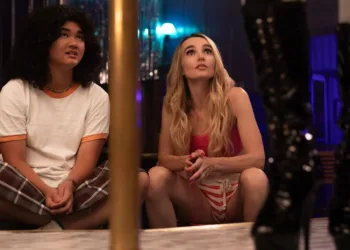The BBC has announced that its crime drama This City is Ours will return for a second season. The decision comes after strong viewer engagement and critical attention, with the show becoming the most-viewed new drama launch on BBC iPlayer this year.
Set in Liverpool, the series is centered around the operations of the Phelan family and their entanglement in a web of drug trafficking, betrayal, and fractured loyalties. It features James Nelson-Joyce as Michael Phelan, a rising figure in a criminal network whose close relationship with gang leader Ronnie, played by Sean Bean, is tested when their control over a key cocaine pipeline begins to fracture. The show’s backdrop includes both urban Liverpool and sun-drenched Marbella, reflecting the cross-border nature of their criminal enterprise.
The series has struck a chord with audiences, with BBC data showing that its opening figures tripled through streaming. Viewership per episode averaged 6.6 million before the broadcast of the final installment, which itself drew 3 million early streams on BBC iPlayer by the Friday prior to its official airing. These numbers established it as a standout hit among recent British dramas, earning strong support from the broadcaster’s drama division.
The show has been described by some media outlets and fans as the “Scouse Sopranos” for its mixture of gritty subject matter and character-driven storytelling. Yet, what has elevated its appeal beyond genre expectations is its tonal variety. A memorable scene in which Sean Bean’s character leads a charge of golf buggies set to the music of Apocalypse Now added unexpected humor to a tense narrative arc. Another moment, in which the cast line-dances to the 1950s tune The House of Bamboo, generated widespread attention online. Short clips circulated rapidly across social media, turning the sequence into a widely replicated trend.
The narrative, crafted by Stephen Butchard, follows Michael and his partner Diana (played by Hannah Onslow), whose love story unfolds amid escalating internal conflicts. Their relationship offers a quieter counterpoint to the show’s chaotic gang dynamics. At the same time, Michael’s ties to the Marbella underworld—built through years of mutually beneficial dealings—start to erode when a missing shipment destabilizes existing alliances. That inciting event sets off a chain of miscalculations and shifting allegiances, gradually pulling key characters into a deeper spiral.
Butchard, known for earlier work on The Last Kingdom, has expressed appreciation for the response. Speaking after the renewal announcement, he said the cast and crew were “blown away” by the reaction and credited viewers for their emotional engagement. “We never expected this level of connection,” he said. “It’s been a privilege to see how deeply people have invested in the world we built.”
Behind the scenes, the production is backed by Left Bank Pictures, the company known for The Crown. This City is Ours marked Left Bank’s first major project following the conclusion of that series. Executive producers Andy Harries, Rebecca Hodgson, Sian McWilliams, and Butchard are joined by Jo McClellan and Sami El Hadi from the BBC. The project was commissioned by Lindsay Salt, Director of BBC Drama.
Salt praised the team for crafting a visually distinctive and narratively ambitious series. “The production team brought this to screen with precision and clarity,” she said in a press statement. “It’s a project that captured something specific, both culturally and emotionally, and we’re thrilled to see it continue.”
Filming took place across Merseyside and southern Spain, lending authenticity to the show’s depiction of international criminal operations. Local economic impact has also been notable. The Liverpool Film Office reported that the series contributed £9 million to the region through local hiring, rentals, and location agreements. Several scenes were shot on active Liverpool streets, integrating real city landmarks into the backdrop of the fictional narrative.
In addition to its dramatic arcs, the series features layered portrayals of domestic strain and long-term friendship. Ronnie Phelan, played by Bean, serves as both a mentor and a cautionary figure to Michael. Their dynamic shifts over the course of the season as trust diminishes. The cast also includes Laura Aikman, Julie Graham, Kevin Harvey, Mike Noble, Bobby Schofield, Darci Shaw, and Stephen Walters, many of whom play key roles in the expanding network of alliances, rivalries, and betrayals.
While precise details about season two’s cast or filming timeline remain unavailable, executive producer Sian McWilliams indicated that the fallout from season one’s final scenes sets up numerous conflicts. “The rivalries have escalated,” she said, “and new ones have just begun. There’s a great deal of unfinished business.” McWilliams hinted that the next season will explore both the consequences of existing power shifts and the emergence of new contenders.
The eight-episode format allowed the first season to explore its world at an unhurried pace, layering subplots through character-driven interactions and slow-burning revelations. That format is expected to return for the upcoming installment, though adjustments to episode count or structure have not been confirmed.
BBC’s approach to releasing the series—offering all episodes on iPlayer ahead of the linear broadcast—has also contributed to its visibility. By Friday afternoon before the final episode’s official BBC One airing, over 3 million users had already completed the season. The decision to make the full season available early reflects ongoing shifts in viewer habits, especially for serialized dramas.
Beyond the UK, international interest is rising. Sony Pictures Television is managing global distribution, with deals anticipated in European and North American markets. Several international outlets have expressed interest in acquiring the show for streaming or syndication. This expansion mirrors trends for other UK-produced dramas with strong local settings and universal themes. As viewing audiences grow more comfortable with cross-border storytelling, shows like This City is Ours become valuable additions to global libraries.
The show’s musical cues and stylized cinematography have also earned praise. The soundtrack combines classic pop and modern noir aesthetics, using musical irony in sequences that underscore emotional tension. Visual direction emphasizes shadowed interiors, nocturnal cityscapes, and saturated outdoor shots—balancing grime and glamor across criminal and domestic settings.
The Phelan family’s internal conflicts, shaped by generational gaps and cultural tension, further enrich the show’s narrative framework. Diana, whose motivations are revealed slowly across the season, emerges as more than a love interest. Her role as both a confidant and a participant in the unfolding crisis complicates conventional genre roles. Her actions in the closing episodes suggest that her influence in future storylines will grow.
Critical feedback has focused on the show’s ability to balance authenticity and entertainment. Dialogue incorporates Scouse idioms and regional speech patterns without sacrificing clarity for non-local audiences. At the same time, the use of iconic British actors like Bean lends the series recognizability even for viewers unfamiliar with the setting.
Location plays a vital part in establishing atmosphere. The contrast between Liverpool’s industrial waterfronts and Spain’s opulent villas underscores how characters shift between economic worlds. These visual juxtapositions support a story that is fundamentally about power—its pursuit, its costs, and its gradual erosion.
Looking ahead, questions remain about the future of key relationships. Will Michael regain control, or is his downfall inevitable? Can Ronnie recover his influence after the setbacks of the finale? Will new figures rise from the chaos, or will returning characters reclaim old ground? With these questions hanging over the narrative, anticipation for season two is expected to build rapidly once production resumes.















































